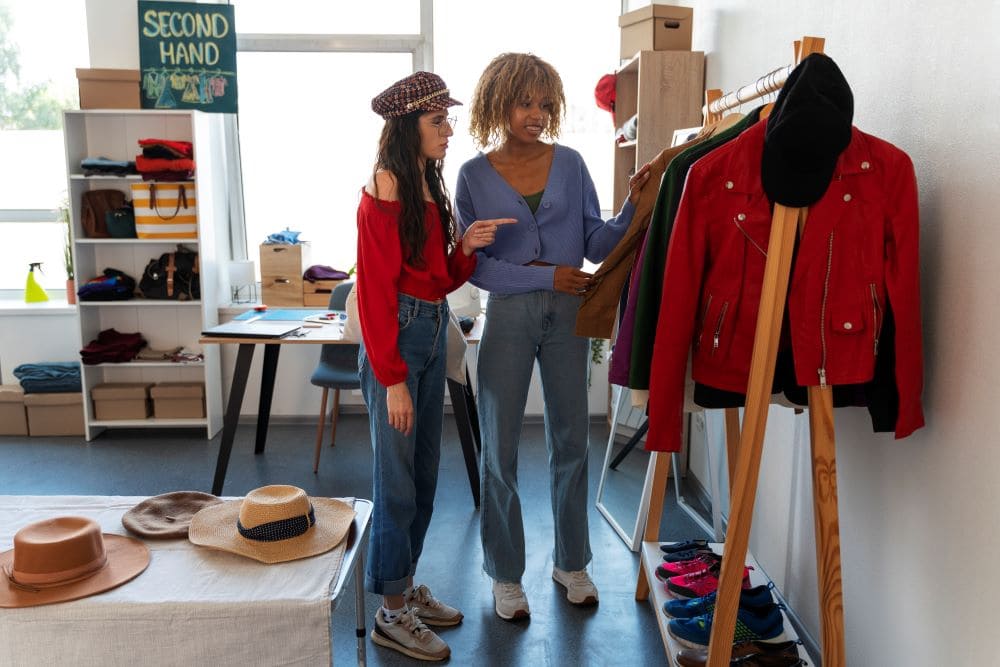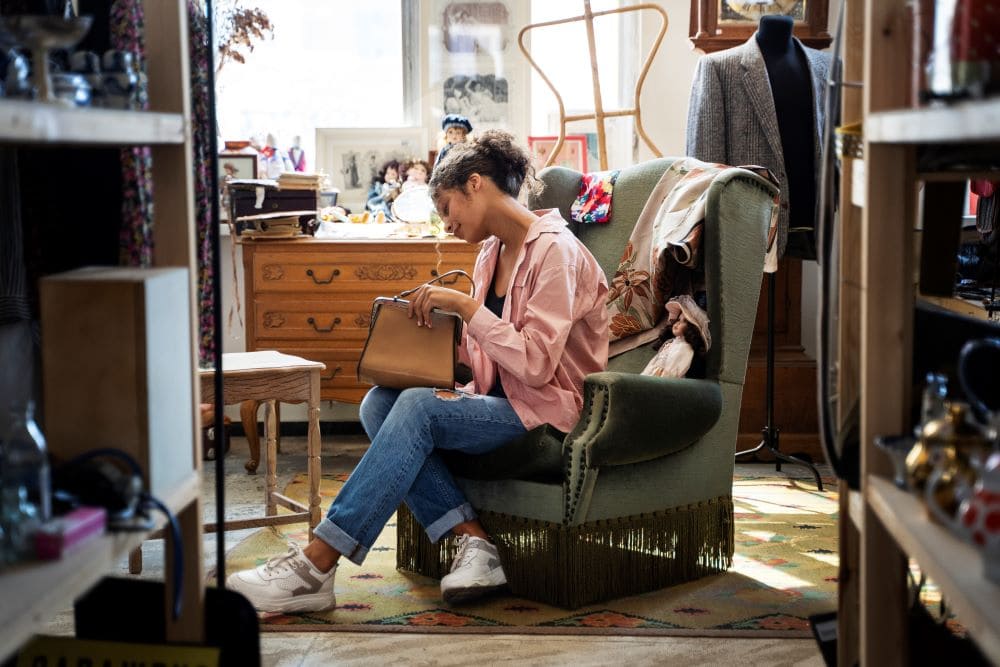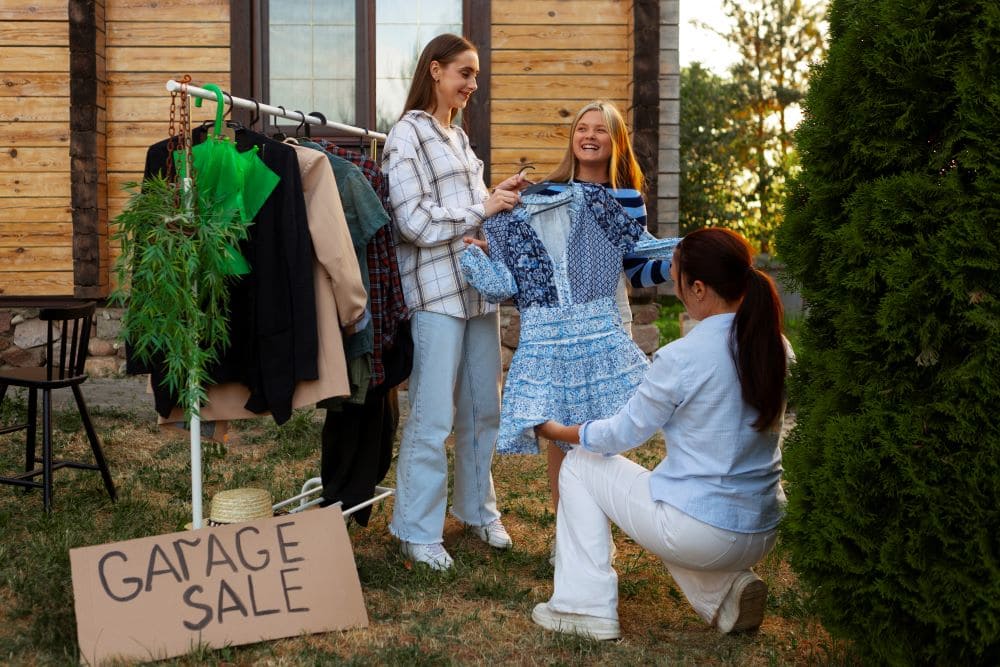
The secondhand fashion market is thriving, with trends for 2025 reflecting a strong shift toward sustainability, innovation, and personal expression. Here are some of the most notable trends emerging in the resale and vintage fashion industry:
1. AI-Powered Personalization and Virtual Try-Ons
- Virtual Styling: With AI advancements, resale platforms can better analyze users’ style preferences, making more personalized recommendations and allowing shoppers to find unique, previously loved pieces that suit their individual aesthetics.
- Virtual Try-Ons: Augmented reality (AR) and virtual try-on technology are enhancing the shopping experience, making it easier for customers to visualize how an item will look on them before committing to a purchase.
2. Upcycled and Reworked Clothing
- Custom Creations: Upcycling, the process of transforming old garments into new, unique pieces, is becoming a creative expression for designers and DIY enthusiasts alike. Expect to see more repurposed items with a focus on sustainable style and exclusivity.
- Circular Fashion: Secondhand marketplaces are fostering collaborations with brands to sell reworked collections, encouraging “closed-loop” fashion cycles where every item finds a new purpose.
3. Luxury and Designer Secondhand Expansion
- Luxury Recommerce: High-end resale is booming, as luxury brands recognize the value of the secondhand market. This is driving growth in authenticated luxury resale, where consumers can buy iconic, high-quality pieces at lower prices.
- Exclusive Vintage Drops: Limited-release vintage collections from big-name designers and luxury brands are driving demand for rare, one-of-a-kind items. Think “archival” fashion from iconic labels, offering vintage items directly or through curated platforms.
4. Youth-Driven Sustainable Brands and Thrift Culture
- Eco-Friendly Gen Z Influence: Gen Z, driven by environmental awareness, continues to push the popularity of thrifting and shopping secondhand. Platforms like Depop, Poshmark, and others cater to this demographic with curated selections and lower price points.
- Community-Focused Shopping: Vintage and thrift shopping events, as well as pop-up markets, are making secondhand shopping a social experience, where community values and environmental ethics are celebrated.
5. Technological Authentication and Blockchain Integration
- Blockchain for Provenance: Authentication methods are becoming more advanced. Some resale platforms are using blockchain to track an item’s history and authenticity, which builds trust in the purchase of high-end and collectible secondhand items.
- Digital Certificates of Authenticity: With NFTs or digital certificates attached to physical goods, customers can verify the origin and ownership history of valuable or rare secondhand items.
6. Gender-Neutral and Inclusive Sizing in Secondhand
- Genderless Fashion: Secondhand shopping aligns well with the rising demand for gender-neutral clothing, with many resale platforms offering genderless categories for easy browsing.
- Inclusive Sizing Availability: Secondhand markets are also expanding their inventory to include a wider range of sizes, filling a gap left by traditional retail which often lacks size diversity.
7. Rental Resale Crossovers
- Rental and Resale Hybrids: Rental fashion companies are merging with secondhand resales, where customers have the option to buy previously rented items. This crossover extends the lifecycle of high-quality garments and makes it easier for consumers to own items they love.
8. Emphasis on “Slow Fashion” and Minimalist Wardrobes
- Capsule Collections: Many shoppers are focusing on building capsule wardrobes from timeless, versatile secondhand pieces, contributing to a more minimalist and “slow fashion” mindset.
- Quality over Quantity: There’s a growing trend toward investing in fewer, higher-quality items that will last, emphasizing durability and craftsmanship, even when shopping secondhand.
9. Digital Platforms for Local and Global Resale Markets
- Localized Secondhand Platforms: Many online marketplaces now cater to local markets, reducing shipping emissions and encouraging community-based resale.
- Global Sourcing: Shoppers interested in global resale are turning to platforms that provide access to international styles and hard-to-find vintage pieces from around the world, expanding their wardrobes with unique, culturally diverse items.
The secondhand market in 2025 is set to continue evolving, merging fashion with innovation and a commitment to sustainability. As resale becomes more mainstream, we’ll likely see a further rise in creativity, accessibility, and quality in pre-owned fashion.


